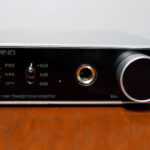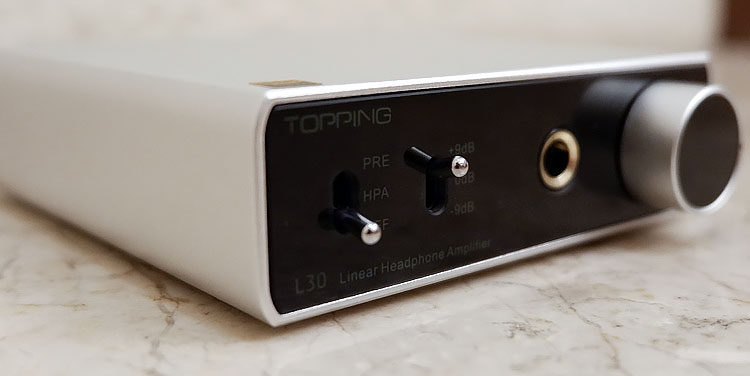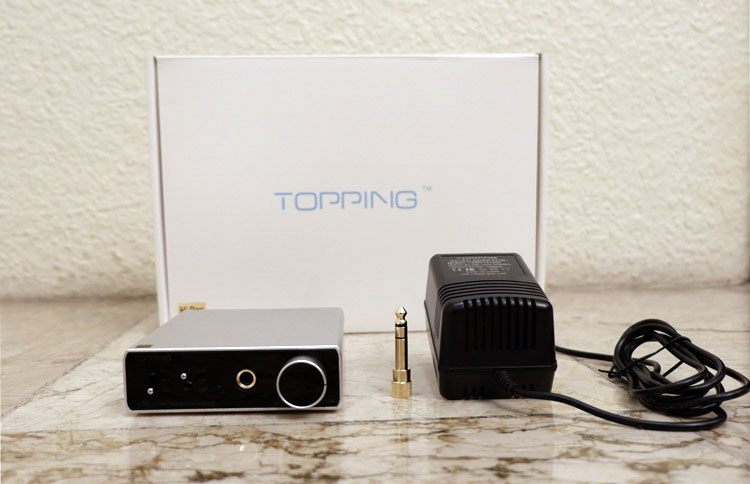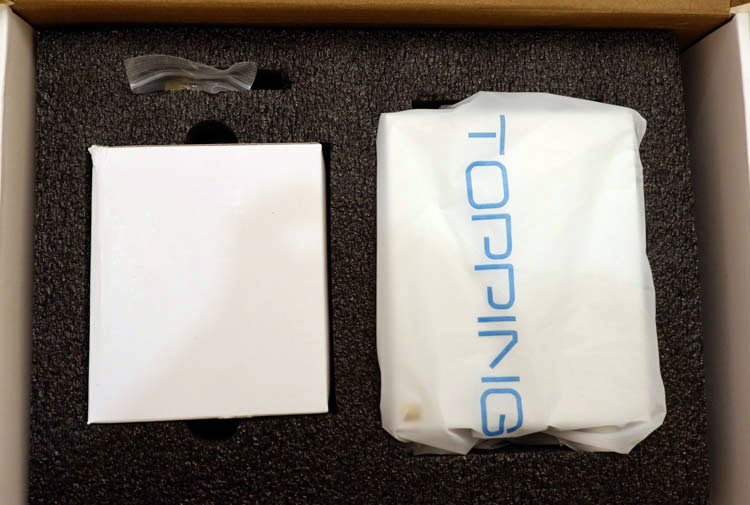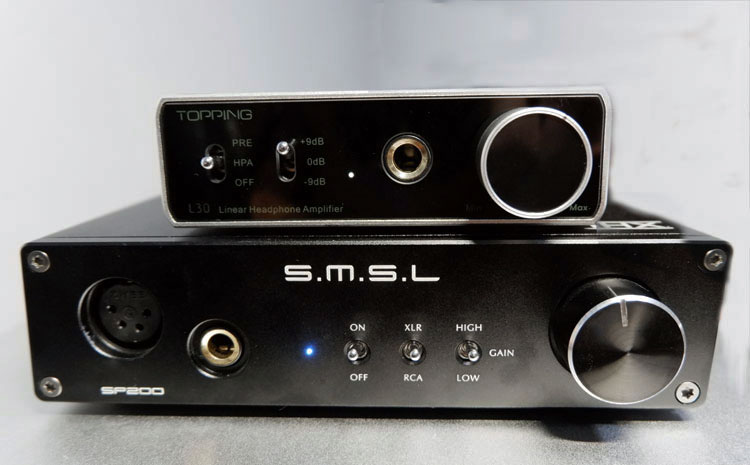Our review of the Topping L30, which is a compact 3.5W capable single-ended headphone amplifier and pre-amplifier using technology from the flagship A90. It is priced at $139.
Disclaimer: The Topping DL30 sent to us is a sample in exchange for our honest opinion. We thank the team at Shenzhen Audio for giving us this opportunity.
To read more about Topping products we have reviewed on Headfonics click here.
Note, this review follows our new scoring guidelines for 2020 which you can read up on here.
Topping has been releasing products left and right, and it seems that they have no plans of stopping. With something new from Topping almost every month, I’m surprised that not even the COVID-19 pandemic has slowed down their ability to develop good products and churn them out like clockwork.
Although I have had limited experience with Topping, I’ve heard a lot of great things about their products. From their DACs to their amps, they all seem to measure very well, and from my first-hand experience, their good measurements do translate quite well into good-sounding gear.
My first experience with Topping has been with their E30 DAC. And my interest was piqued when they released the L30 headphone amplifier, which is designed to pair with their E30 DAC.
I was pleasantly surprised at how much I ended up liking the E30, despite having more expensive DACs, and I’m looking forward to hearing if the L30 can do the same.
Features
A nested feedback composite amplifier is an amplifier topology that utilizes 2 or more cascaded op-amps. A negative feedback loop is then put in the circuit, which would cancel out any distortion inherent to the circuit.
Although this would reduce gain, this type of circuit topology can produce an almost distortion-free output signal.
With Topping’s own NFCA(nested feedback composite amplifier) modules, similar to what is being used in the A90 Flagship headphone amplifier, the L30 can provide excellent AC & DC performance.
This translates to the L30 being able to provide ridiculous THD numbers in the order of 0.00007%. This THD number is very similar to the THD values of the currently popular THX AAA amplifiers.
The L30 also implements Toppings’ UHGF (ultra-high gain feedback) Technology, which gives it the ability to drive even the most demanding headphones. At 3.5W into a 16Ω load, I do not doubt that the L30 can drive most modern headphones.
With these 2 technologies, the L30 has very low distortion and heaps of power. This makes the L30 a contender in the headphone amplifier market, and I’m waiting to hear this translate into how the L30 sounds.
Purposing
The output impedance of the headphone section of the L30 is >0.1Ω, which ensures that it won’t mess with the frequency response of low-impedance drivers.
Having the ability to pick 3 gain settings and a low output impedance means fine-tuning the volume will be much easier no matter the power level your headphones might demand.
Aside from being a headphone amplifier, the L30 is also designed to be a preamplifier. Integrating this with the E30 will make a great upstream section to a pair of headphones and a pair of powered speakers or a speaker amp.
With an output impedance of just 20Ω, the L30’s preamp will be able to pair well with most amplifiers.
Design
The L30 was designed to be paired with Topping’s E30, I got a silver L30, which is a perfect match for my silver E30.
Despite getting the E30 a few months before getting the L30, Topping is very consistent in how they finished the case on the E30 and the L30. So, even those who are obsessive about having a perfectly matched pair would not be bothered with possible batch-to-batch inconsistencies.
Upfront on the L30, there is a 3-way switch that allows me to select between off, headphone amp, and pre-amp mode.
This is a feature that I rarely see, as most headphone amps with pre-amps just automatically turn off the pre-amp section when headphones are plugged in, or even worse just leave both the pre-amp and headphone section on all the time.
It’s nice of Topping to let the user select the mode of their headphone amp, instead of making the user unplug their headphones every time they want to use the preamp to power speakers.
Next to the power/mode switch, is a gain switch. The L30 lets you choose between -9dB, 0dB, and 9dB gain. This would make the L30 a versatile unit, as it would allow the user to fine-tune the volume adjustment of the headphone output, ensuring that the L30 will be versatile enough to power anything from very sensitive IEM’s up to power-hungry full-size headphones.
Then, of course, there is a single-ended ¼” headphone plug, as well as the volume potentiometer. The potentiometer knob is made of plastic, and it turns very smoothly, I would have wanted slightly more resistance though, to prevent accidental volume adjustments.
Power supply
One thing that I believe I need to mention with the L30 is that the wall wart on the L30 is a transformer that converts the voltage from your system voltage(110V or 220V) to 15V, which is what the L30 accepts. This is a slight departure from the more common switch-mode power supplies that are used in most electronics today.
Switch-mode power supplies are the most prevalent power supplies used in most electronics today, because of low manufacturing costs, and the ability to accept a wider range of voltage input from 110V to 220V.
However, switch-mode power supplies are less resistant to harmonics from the power system, and may also generate high-frequency noise due to the switching transistors inside.
Topping’s decision to do away with the switch mode power supply was to ensure that the L30 would have a quiet and clean power supply. The power supply, therefore, blocks out line noise, while reducing harmonics that would come in from high-speed switching transistors.
This sounds like Topping had to put a more significant chunk of the budget into the power supply, but I think it paid off.
Power
With cleaner power coming into the L30, the first thing that I noticed with the L30 is the distortion-free presentation. I can say that the L30 remained clean, and when I plug in sensitive IEM I can’t perceive any noise at all.
At the other end of the spectrum, the Topping L30 was able to take anything I threw at it. The L30 was able to power all my headphones, including my Sennheiser HD600, and my MrSpeakers Aeon Flow Closed with some power to spare.
Package & Accessories
The L30 came in Topping’s typical cardboard box, similar to the box that the E30 came in, only maybe a bit bigger. Inside the box, I found some thick foam inserts that guarantee protection for the L30 during transport.
Aside from the DAC, the box contained the heavy power brick and a 3.5mm to ¼” adaptor. An RCA cable would have been a nice addition for an entry-level product like this, but getting one from your local hardware store should not cost more than $10, so I guess it’s okay.
The packaging on the L30 is just practical, and I’m glad that Topping didn’t spend a lot on the packaging, and instead spent it wisely on the L30 amp itself, as we’re about to see.
Sound impressions
Summary
When I plugged in the Topping L30, I found that it had an even-handed tonality. While amplifiers at this price point tend to emphasize treble too much to disguise themselves as detailed, or they emphasize the bass to sound more enjoyable, I’m glad to hear that the L30 did neither of these things. Topping went for pure neutrality, without any disguises or gimmicks.
Details and texturization
Details and texturization are quite good for the price point, and picking out details within the sound is not that hard. During calmer parts of the song, the L30 performs superbly. I’m able to hear even microdetails and overtones in the vocals and the textures of the voice of the artist.
The plucks of the guitar or how the pick strikes the strings are strikingly natural. Room details are also quite apparent with the L30’s detailed presentation, where you can almost hear how large or small the room is when the recording is done.
However, once the passage goes into a faster pace, the L30 starts to show some of its faults. It starts to trip over its own feet a little bit. When there are quick successive drum beats, the L30 sort of blurs them together a bit, and they don’t sound as distinct as I expect them to be.
The soundstage on the L30 is slightly narrow but does not end up feeling closed in. There’s no wall at the end of the sound, but the sound seems to just end quite near the head. With good detail retrieval, my headphones were able to create a strikingly tangible image with the L30 in the system
The sound coming out of the L30 is quite impressive for the price point because it remains natural and detailed, and only falls short when the song starts to get too busy.
Stacking with the E30
Both halves of the E30+L30 stack are feature-rich for their price point, and that’s why Topping has been advertising them as “hot hatches”. They’re small but packed to the brim with great features, I can see them as a great way to power a simple desktop system with headphones and a pair of powered nearfield speakers.
Aside from aesthetically being a perfect pair, the E30 and L30 were designed to be sonically complementary. While the L30 has a very neutral sonic presentation, the overall sound of the E30 is slightly warm, and rich, with good depth for such a small DAC.
As a system, I was impressed with how well the nuances of the music were presented. Even microdetails, such as the shifting of the fingers on a guitar, and the way the piano keys are being struck, are well presented.
While being able to present the details quite well, the stack is still very enjoyable. The relationship between these two components is truly synergistic.
While the E30 adds a touch of warmth, the L30 creates a detailed presentation from that smoothed-out sound. As a stack, they can create a detailed but still natural sound experience.
Synergy
I first listened with my Sennheiser HD600 plugged in, and I can say that there was enough power to drive the HD600 to a respectable level even at just 0dB gain. Volume was not at all lacking, and dynamics were not subdued.
The HD600 ended up sounding the way it should, fairly neutral with a slightly early roll-off at the frequency extremes. The amp was able to help the HD600 sound the way it should, creating a truly neutral but natural and immersive listening experience.
On the other end of the spectrum, I tried a pair of Mr. Speakers AEON Flow closed. This headphone has a much lower impedance of just 13Ω but requires the amp to supply quite a bit of current due to the lower 92dB SPL.
Despite this, the Topping was able to power the AEON to a respectable volume level at maximum gain, with some power to spare.
The AEON Flow tends to sound sharp if the source lacks current, but this was not the case on the little L30, as the AEON Flow sounded very neutral when plugged in. The amp was able to bring out the details and make the nuances of the sound come to life.
The AEON Flow is quite a source-revealing headphone, and I’m quite impressed with how the L30 was able to handle the AEON Flow properly.
Select comparisons
SMSL SP200 THX AAA 888
It would seem unfair for me to be comparing these 2 amplifiers, as the SP200’s price tag is double that of the Topping.
With the SP200 having balanced input and output connectors, the entire circuit inside the amp is just single-ended, so balanced here is for convenience. Without the supposed advantage of balanced circuitry, I think it’s almost fair to compare the 2 amps.
Power
In terms of power, the SP200 has quite a bit more power, as I can’t even max out the volume dial on the SP200 on any headphones that I own, while I end up pushing the L30 a bit more.
But then again, both amplifiers were able to power all my headphones to a respectable level, so I’m okay with the power output on both.
Tuning
Overall tonality is similar on both amplifiers, with the SP200 sounding slightly brighter. It’s interesting though, that while the SP200 ended up sounding slightly brighter, the L30 seems to have a slightly splashier and less defined treble.
Both amplifiers have pretty much the same amount of bass, but the presentation is just slightly different. The SP200 tends to be more clinical, while the L30 has a slightly smoother and warmer bass, this leads to the L30 slightly lacking dynamics when compared to the SP200.
The SP200 might be slightly more resolving than the L30, as the SP200 can present more complicated passages with ease. This articulate nature of the SP200 also ends up making it sound slightly thinner and more revealing of poorly recorded tracks.
Although the Topping might end up lacking in power compared to the SP200, I can say that the L30 creates a slightly smoother overall tonality. While the SP200 is more clinical, and just a hair faster, I found the Topping has a more enjoyable presentation.
Our Verdict
I’ve had the E30 for quite a while, and I was impressed with what the little E30 was able to do. When the L30 came out, I was excited to find out if this little amp would be able to impress me as much as the E30 did. And I was not disappointed.
To me, this amp is quite close to what I would imagine a wire with gain would sound like, with an overall neutral tonality without ending up too bright. Despite being neutral, I also found it to sound natural and detailed for the price point.
With a pre-amp out, low noise floor, natural tonality, lots of power at 3.5W into 16Ω, and a low output impedance for the headphone out, the L30 is a versatile little amplifier that can be a great fit to supplement a growing collection of headphones.
Topping L30 Specifications
- NFCA (Nested Feedback Composite Amplifier)
- Outputs: RCA, 6.35 mm single-ended
- Inputs: RCA
- 3 gain settings: -9.9 dB / 0 dB / 9.5 dB
- Maximum power output: 3500 mW x 2 16Ω
- Noise: 0.3 uVrms
- Dynamic range: 141 dB
- THD + N: <0.00007%
- Output impedance: < 0.1 ohm
- Output impedance (pre-amp mode): 20 ohms


